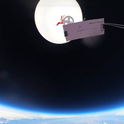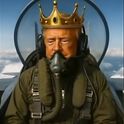In a recent interview, the Estonian prime minister, Kaja Kallas, claimed that under current Nato defence plans her country would be wiped off the map and its capital Tallinn razed to the ground. The plans, she said, envisaged that Estonia and the other Baltic states would be initially overrun, but retaken 180 days later. She noted the scale of destruction that Russia had managed to inflict in Ukraine in the first 100 days of the war and asked the Alliance to change its strategy to one which provides for the defence of every inch of its territory.
She is right. Estonia is the most exposed of all Nato countries to the risk of a Russian attack. It has a population of only 1.3m and a 180-mile frontier with Russia. Around 30 per cent of the population are ethnic Russians, most of whom were deliberately settled there during the period when Estonia was forcibly incorporated into the Soviet Union. Many live in the north-east of the country, around the city of Narva, which lies right on the Russian border.
Since the country regained its independence in 1991, Estonian governments have tried to encourage the Russians to integrate more into Estonian society and to learn the language which, during the years of occupation, few bothered to do. The policy has had some success. Many Russians in Estonia now send their children to Estonian schools and see their future as Estonian citizens. There is little enthusiasm for rejoining Russia. But they still tend to watch Russian state television and there is inevitably a question mark over where their political loyalties really lie.
Until the recent Russian invasion of Ukraine it was assumed that any Russian intervention in Estonia would follow the model of its annexation of Crimea and of Lukhansk/Donetsk in 2014, ie by the covert insertion of agents provocateurs (“the little green men”) who would artificially stimulate unrest in the Russian speaking area around Narva and call for Russia to intervene to restore peace.
If Russia were to contemplate military action against Estonia, of which there is currently no sign, this would still be the most likely scenario. But it is not the only one. The invasion of Ukraine has shown that President Putin is ready to deploy the whole apparatus of his military machine and not just his special forces. A surprise, standing start attack against one or all of the Baltic states cannot be ruled out. Nato does indeed need to revise its strategy for deterring it.
This means action at two levels: the declaratory and the operational. Nato must make publicly clear that any Russian incursion into the territory of a member state will be met with an immediate and robust military response which will include strikes on targets in Russia. There were good reasons for Nato to be cautious about risking a direct military confrontation with Russia over Ukraine. But it is important for Russia to realise that such reticence will not apply if Nato itself is attacked.
More important however are deployments on the ground. Estonia takes defence seriously and currently spends 2.3 per cent of its GDP on it, due to rise to 2.5 per cent by 2025. This is above the Nato average. Though its standing forces are small it has an impressive capacity for mobilisation. But it is critically dependent on support from its allies.
At the moment, there are no forces from other member states permanently garrisoned in Estonia, Latvia or Lithuania, but in each of them a battlegroup of around 1,000 personnel with rotating membership is deployed. These battlegroups, led by Canada, Germany, the United Kingdom and the United States, would not be capable of resisting a substantial invasion. But they would ensure that from the outset the armed forces of a range of Nato countries would be engaged.
Given the lack of strategic depth in the Baltic states (Tallinn is only 125 miles from the Russian border), Nato cannot rely on a defensive plan based on manoeuvre warfare or on a reinforcement capability which takes too long to arrive. It needs to have assets in place which would enable it to retaliate immediately.
At its summit in Madrid this week Nato should therefore abrogate the Nato/Russia Founding Act made in 1997 (which Russia has already breached by attacking Ukraine) over the stationing of forces in the new member states; and announce the establishment of permanent multinational bases in all three Baltic countries equipped with offensive weaponry such as long-range artillery and strike aircraft. One of these should be near the Estonian/Russian frontier within range of St Petersburg. Another should be in the Suwaki Gap, the narrow strip of Lithuanian territory between Belarus and Kaliningrad.
Deterrence only works if it is underpinned by credible military capabilities; and as a former leader in Moscow observed in 1989, life punishes those who come too late.












